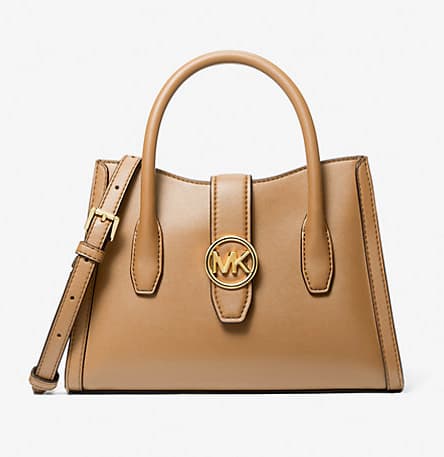
[ad_1]
Italy is once again in political turmoil. On Thursday, after key coalition partners – the post-ideological Five Star Movement, far-right League and centre-right Forza Italia – withdrew their support from his “national unity” government, Italy’s Prime Minister Mario Draghi announced his resignation.
The country is now left with a caretaker government until a snap general election scheduled for September 25, 2022 amid a growing energy crisis, rampant inflation, yet another COVID-19 wave, and an ever-deepening geopolitical conflict between the European Union and Russia on the back of the latter’s invasion of Ukraine.
Moreover, Draghi’s government was the authority Brussels relied upon to ensure the €210 billion ($214bn) allocated for Italy from the EU Next Generation Fund – the biggest recovery programme since the US Marshall Plan – would be efficiently managed. With Draghi gone, there are now serious concerns over delays in reimbursements and implementation.
Draghi’s cabinet is also credited with swiftly finding alternative sources of gas to reduce dependence on Russia. Since the beginning of the Russian invasion of Ukraine in February, Italy has secured increasing supplies of Algerian gas, which could also be moved further northwards to Germany, if needed. But with Draghi out of power, Italy’s energy future is once again in question.
Under Putin’s shadow
The dissolution of Italy’s government is a major win for Russia’s President Vladimir Putin. While Draghi has acted as a major curb to Putin’s influence in Italy and Europe, the three political leaders that are responsible for the government crisis all showed support for the Russian dictator in the past.
Giuseppe Conte, the head of what remains of the rapidly shrinking Five Star Movement (support for the group fell from 32 percent in the 2018 general election to two percent in local elections in June this year, for example), supported the removal of sanctions against Russia and called for Moscow’s return to the G8 in 2018. Five Star’s links to Russia are well documented and date back to the 2014 annexation of Crimea.
League leader Matteo Salvini’s support for Putin is also no secret: in 2017, under Salvini’s leadership, League signed a formal cooperation agreement with Putin’s party United Russia. In 2019, BuzzFeed News and Italy’s Espresso unearthed what they alleged to be a plot to funnel funds from Russia to the League involving men close to Salvini and Putin – a judicial inquiry for international corruption is ongoing.
Forza Italia’s head, Silvio Berlusconi, meanwhile, has been a long-term friend of Vladimir Putin. They visited each other in their holiday homes and were close allies on the international scene when Berlusconi was prime minister in the 2000s. The two leaders also have joint commercial interests.
After the invasion of Ukraine, Salvini released a vague statement condemning “all military aggressions”, and only after some criticism did he admit that “Russia is wrong”, but barely ever mentioned Putin by name since. Berlusconi kept quiet for a month and a half after the invasion before saying that he was “deeply disappointed and saddened by Vladimir Putin’s behaviour”. Conte’s condemnation of the Russian invasion has been unambiguous, but his recent position against sending more arms to Ukraine – linked to a similar sentiment among many Italians – has been interpreted by some as a sign of soft support for Russia.
Draghi’s exit undoubtedly favours Putin – but even more important for the Russian leader would be a victory in the ballot box of leaders and parties close to him.
Berlusconi’s legacy
The current electoral law is a mix of proportional representation and first-past-the-post electoral colleges. It favours electoral coalitions. The only coalition that formally exists at the moment is the right-wing alliance of League, Forza Italia and Brothers of Italy – the far-right party led by Giorgia Meloni.
The latter is first in opinion polls (23 percent), with the centre-left Democratic Party trailing shortly behind (22 percent). However, the Dems’ plans to form a broader alliance with the Five Star Movement are now in jeopardy – Democrats are resolutely pro-Draghi and disapprove of Five Star’s anti-Draghi U-turn. The Democratic Party is in talks with breakaway centrist factions that left the Dems recently, but it is unclear at this stage whether they will be able to form an electoral alliance.
When it comes to internal cohesion, the right-wing coalition is also experiencing problems. Disagreements have already stopped them from winning mayoral races in many cities in recent local elections, but the prospects of a landslide national victory if they manage to keep their alliance together until election day will probably act as a strong catalyst for unity.
While Berlusconi and Salvini feel threatened by Meloni’s rising star – Brothers of Italy is ahead of League (15 percent) and Forza Italia (seven percent) by several points – Meloni might indeed be the most presentable option for premiership in the eyes of national and international institutions because she took a decisive pro-Ukraine position since the invasion.
Even before her pro-NATO turn, she received significant endorsements from centrist quarters, raising fears that her skilful weaving of “respectability politics” with a fundamentally far-right platform might turn out to be more effective than the flamboyant “strongman” style of Salvini, who has been steadily losing votes and popularity.
The right-wing electoral alliance is a direct descendant of Berlusconi’s government coalitions of the 1990s and the 2000s: back in 1994, for example, Forza Italia was the largest partner in the ruling coalition, followed by National Alliance, which came out of the dissolution of the far-right Italian Social Movement and a formal rejection of their fascist roots. Back then, Northern League (which later became League) was rooted in the north of the country, limiting its national impact in the polls.
Today, Meloni’s party comes from a section of National Alliance that, despite its earlier rejection of fascism, has strong and close documented links with fascist supporters and backdoor political operatives.
In 1994, Berlusconi enabled the entry into national government of allegedly post-fascist political forces and the early populists of Northern League. Northern League started in the late 1980s as an anti-establishment movement that supported northern Italy’s independence from Italy, and blamed the Italian south for the country’s ills.
Nearly 30 years later, Berlusconi is playing a key role in supporting two openly far-right movements that now hold the vast majority of the coalition votes.
Setting aside their differences on Russia, Brothers of Italy and League share a militant anti-immigration agenda, and opposition to most EU policies and reforms demanded by Brussels in exchange for Next Generation EU money. They both deploy populist tactics and rhetoric.
If they realise their electoral ambitions in September, the right-left convergence of the populist government alliance of Five Star and League formed in 2018 would be replaced by a fully fledged far-right government with fascist inclinations.
This would mark the total failure of the strategy systematically pursued by the left and the centre left in recent years of trying to break populists into some kind of “right” and “left” fronts, as a way to contain the rise of the far right. Now, with the Five Star crumbling, League and Brothers of Italy have little competition in the populist camp.
Bleak days ahead
Progressive forces will need to drastically change their path if they want to block the electoral rise of the far right. The smaller left formations have been preoccupied with critiquing Draghi’s technocratic approach and are stuck on an interpretation of the current moment that dates back to the eurozone crisis of the early 2010s – in any event, the narrative of “technocracy vs the people” has been successfully hijacked by populists.
The centre-left Democratic Party has been very good in manoeuvring in the corridors of power of Italy’s representative democracy, and has played a prominent role in government for most of this legislature despite its 2018 electoral defeat. It is struggling to propose a forward-looking programme that goes beyond defensive – although admittedly valid – arguments that a government without it would put Italians in a worse spot than they already are. In the aftermath of Draghi’s demise, the Democratic leader Enrico Letta rightly indicated a social agenda for Italy as the main party platform for the elections, as it is the only OECD country where salaries have declined in real terms since 1990. The policy details are yet to be defined.
The biggest challenge for Democrats and the left remains how to attract those disaffected voters that have moved in recent years to populist formations such as Five Star or might not vote altogether – after all, a large number of voters are undecided or do not plan to vote in September.
Despite the hype about the Mélenchon model in France, the erratic and destructive actions of Five Star politicians are a clear sign that the idea of a “progressive populism” that would act as a viable alternative to the far right is a chimera that is best left to the annals of political history.
Progressives should rather focus on concrete social democratic measures that would benefit the whole of society, such as putting an end to the wild west of precarious contracts, increasing wages, raising spending on public health and family and labour welfare, and adopting inclusive citizenship laws for people of migrant and refugee background.
If they fail to come up with a new, more efficient and attractive electoral strategy, they cannot prevent a major victory by the far right, and Putin, in Italy.
The views expressed in this article are the author’s own and do not necessarily reflect Al Jazeera’s editorial stance.
[ad_2]
Source link




